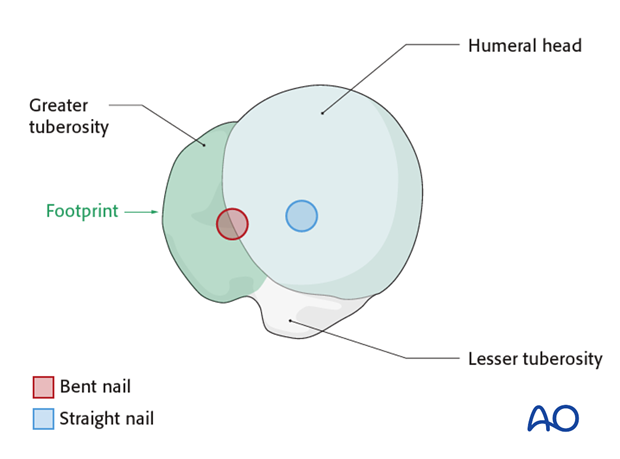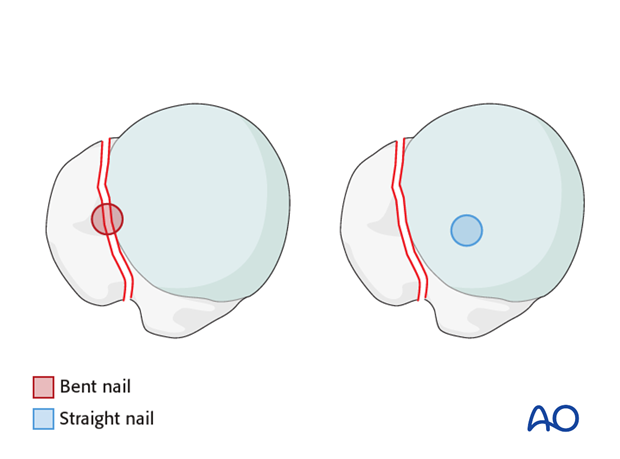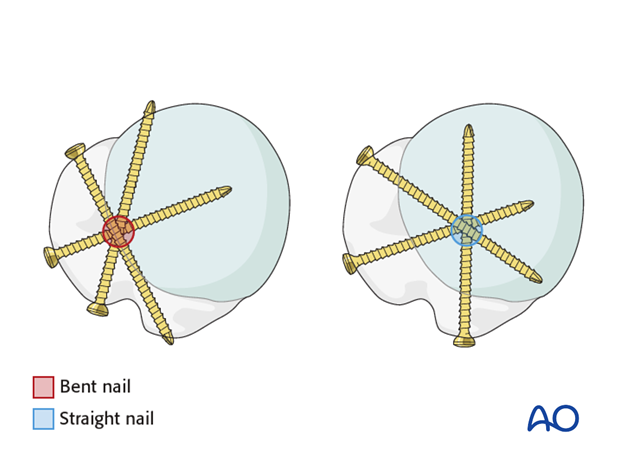Bent vs straight nails
1. Introduction
Bent nails were designed to provide easier insertion into the medullary canal. There are various other considerations as discussed below.
2. Interference with the rotator cuff footprint
The entry point for a bent nail is intended to lie just medial to the rotator cuff insertion, but in practice it may damage the bony attachment. This bony defect in the footprint cannot be reconstructed later.
The entry point for a straight nail lies under the rotator cuff so the nail is inserted through the rotator cuff. This requires an incision, which should be made in the line of the tendon fibers which can then be closed effectively by a side to side suture.

3. Fixation in osteoporotic bone, fifth anchoring point
Due to the bone density in osteopenic bone straight nails provide a better fixation in the proximal humerus in the region of their entry point. Bent nails run through the greater tuberosity which has a lower bone density compared to the superior humeral head.

4. Interference with fracture lines
If there is a fracture extension/involvement of the tuberosities in humeral shaft fractures, consider the different trajectories of the nails. The trajectory of bent nails often passes through the fracture line between the greater tuberosity and the humeral head whereas straight nails penetrate the humeral head medial to the fracture line.

5. Fixation pattern of screws
Straight nails run more medial in the axis of the medullary cavity. Therefore, it is possible to perform a direct fixation of the lesser tuberosity through the nail.













